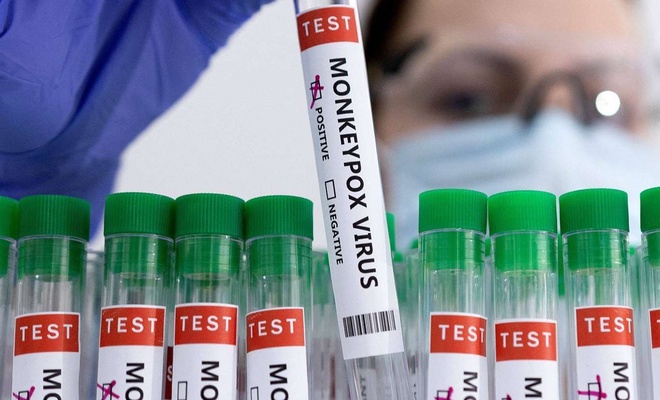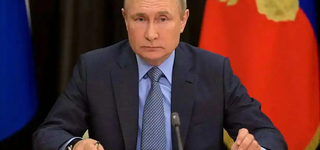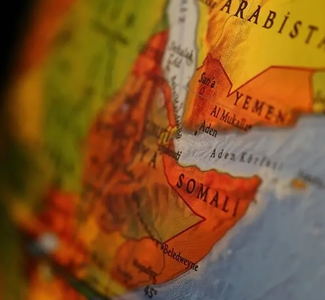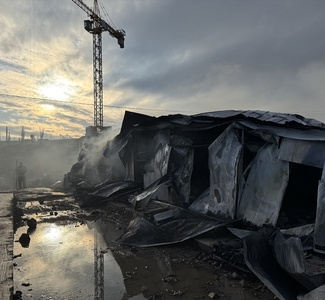WHO declares global health emergency: What you need to know about mpox
The World Health Organization (WHO) has officially declared mpox, formerly known as monkeypox, a global health emergency following a significant increase in cases across Central and East Africa.

 Google News'te Doğruhaber'e abone olun.
Google News'te Doğruhaber'e abone olun. This urgent decision was made after new cases of the disease were confirmed in Burundi, Kenya, Uganda, Rwanda, and, most recently, in Sweden. The declaration underscores the growing concern about the virus's potential to spread further and cause more significant public health challenges.
Mpox, a viral infection that shares similarities with smallpox, is considered rare but can be severe, particularly in vulnerable populations. The disease first gained widespread attention during a global outbreak in 2022. While the outbreak eventually subsided in many regions, including Europe, Asia, and the Americas, it has continued to spread in certain parts of Africa, prompting the WHO to elevate its status to a Public Health Emergency of International Concern (PHEIC). This designation is one of the highest alerts the WHO can issue, aimed at galvanizing international resources and attention to contain the virus and mitigate its impacts.
What is Mpox?
Mpox is a zoonotic disease, meaning it is transmitted from animals to humans, but it can also spread from person to person. The virus belongs to the orthopoxvirus family, which also includes smallpox. Although the symptoms of mpox are similar to those of chickenpox, they are typically more severe. Infected individuals may experience fever, headaches, muscle aches, back pain, swollen lymph nodes, and, most notably, a characteristic rash that progresses from flat lesions to raised bumps, blisters, and eventually scabs.
The virus exists in two distinct strains, or clades: clade 1 and clade 2. Clade 1 is currently spreading in Central and East Africa and is associated with a higher mortality rate, approximately 3.6%. This clade has been particularly concerning because it has been responsible for the majority of severe cases and deaths in the region. Clade 2, on the other hand, is less severe, with a mortality rate of less than 0.2%, and was the strain behind the 2022 outbreak that originated in West Africa and spread to other continents.
Why Did the WHO Declare a Global Emergency?
The WHO's decision to declare mpox a global health emergency was driven by several factors. Primarily, the increasing number of cases in Central and East Africa, coupled with the virus's spread to nearby countries, raised alarms about the potential for wider transmission. The situation is particularly concerning given the ongoing challenges in some African nations, including limited healthcare infrastructure and the concurrent crises such as drought, conflict, and other infectious diseases.
Another critical factor is the uncertainty surrounding the reasons behind the sudden increase in cases. Health experts are still investigating whether the rise in reported infections is due to a genuine increase in transmission or if it reflects improved surveillance and reporting following the 2022 global outbreak. Regardless, the WHO's declaration is a proactive step to ensure that countries worldwide are aware of the public health risks posed by mpox and are prepared to respond effectively.
Is Mpox the Next Pandemic?
At this time, health experts do not believe that mpox is likely to develop into a global pandemic. Several factors contribute to this assessment, including the availability of effective vaccines and antiviral medications that can prevent the spread of the virus and reduce the severity of the disease in most cases. For example, the Jynneos vaccine, which is approved for preventing smallpox and mpox, has proven effective in stopping the spread of the virus, especially when administered shortly after exposure.
Moreover, mpox transmission requires close physical contact, particularly with the lesions of an infected person, which limits its ability to spread as rapidly as airborne viruses like COVID-19. While the 2022 outbreak demonstrated that mpox could spread through sexual contact, particularly among men who have sex with men, the virus does not spread as easily as respiratory diseases. This makes it less likely to cause a widespread global pandemic.
How is Mpox Spread?
Mpox is primarily transmitted through direct contact with the bodily fluids, lesions, or respiratory droplets of an infected person. Human-to-human transmission typically occurs when healthy skin comes into contact with the lesions of someone infected with mpox. This close-contact transmission was a key factor in the spread of the virus during the 2022 global outbreak, particularly among individuals engaged in intimate physical interactions.
In addition to direct contact, mpox can also be transmitted from animals to humans. This zoonotic transmission often occurs when people are bitten by infected animals or come into contact with their bodily fluids, which can happen during hunting, handling, or cooking infected animals. Historically, the majority of clade 1 mpox cases in Africa have been linked to animal-to-human transmission, particularly in rural areas where people may be more likely to come into contact with wildlife.
While mpox is not considered a classic airborne disease, it can be spread through contact with contaminated objects, such as clothing or bedsheets that have recently been in contact with an infected person. However, the virus does not survive long on inanimate objects, so this mode of transmission is less common than direct human contact.
When is Mpox Most Contagious?
Mpox is most contagious during the period when the characteristic skin lesions are present. These lesions, which start as flat red spots and progress to raised bumps, blisters, and eventually scabs, contain high levels of the virus. The risk of transmission is highest when these lesions are active and have not yet crusted over. Once the scabs fall off and new skin forms underneath, the person is no longer considered contagious.
Who is Most at Risk of Getting Mpox?
Certain populations are at higher risk of contracting mpox, particularly those living in high-density areas where the virus is known to circulate. For example, individuals in refugee camps or crowded urban areas in Sub-Saharan Africa are more susceptible to infection. These populations often face additional challenges, such as malnutrition, limited access to healthcare, and exposure to other infectious diseases, all of which can exacerbate the severity of mpox.
In contrast, the risk of mpox in countries like the United States remains low due to the low prevalence of the disease and the availability of vaccines and antiviral treatments. However, certain groups, such as immunocompromised individuals, including those with HIV, organ transplant recipients, or those undergoing immunosuppressive chemotherapy, should take precautions to avoid exposure. Despite the risks posed by mpox, more common infections like respiratory syncytial virus (RSV), influenza, and COVID-19 still represent greater threats to these vulnerable populations.
Can Mpox Be Fatal?
While mpox generally has a lower mortality rate compared to smallpox, it can still be deadly, particularly in regions with limited access to medical care. In the Democratic Republic of the Congo, where clade 1 is prevalent, the case fatality rate has been estimated at 3.6% this year. Those at greatest risk of dying from mpox are individuals who lack access to vaccinations and antiviral treatments, which can help manage the infection and prevent severe outcomes.
If clade 1 were to spread to more developed countries like the United States, the case fatality rate would likely be much lower due to better healthcare infrastructure and the availability of medical interventions. However, the situation in Africa remains dire, with many communities facing ongoing challenges in controlling the virus and providing adequate care for those affected.
Is There a Cure or Vaccine for Mpox?
There is currently no cure for mpox, but most cases resolve on their own with supportive care. For those who do require medical treatment, antivirals like Tecovirimat (TPOXX) can help reduce the severity of symptoms and shorten the duration of the illness. This medication has been shown to be effective against orthopoxviruses, including mpox, and is an important tool in managing the disease.
Vaccination is also a key component of mpox prevention. The Jynneos vaccine, which was originally developed to protect against smallpox, has been shown to be effective in preventing mpox infection as well. This vaccine can be administered either after a known exposure to the virus (post-exposure prophylaxis) or as a preventative measure for individuals at higher risk of exposure.
Global Response and Next Steps
The WHO's declaration of mpox as a global health emergency is a call to action for countries and international organizations to intensify their efforts to control the spread of the virus. This includes increasing surveillance, improving public health communication, and ensuring that vaccines and antiviral treatments are accessible to those who need them most.
In Africa, where the impact of mpox has been most severe, there is a need for greater investment in healthcare infrastructure and resources to manage the disease. This includes not only treating those currently affected by mpox but also addressing the underlying factors that contribute to the spread of the virus, such as poverty, inadequate sanitation, and limited access to healthcare.
The global community must also work together to share knowledge and resources, drawing on lessons learned from past outbreaks, such as HIV, COVID-19, and Ebola, to effectively combat mpox. By prioritizing public health and ensuring that all countries have the tools and support they need to respond to the virus, the world can prevent mpox from becoming a more widespread and devastating health crisis. (ILKHA)



















































